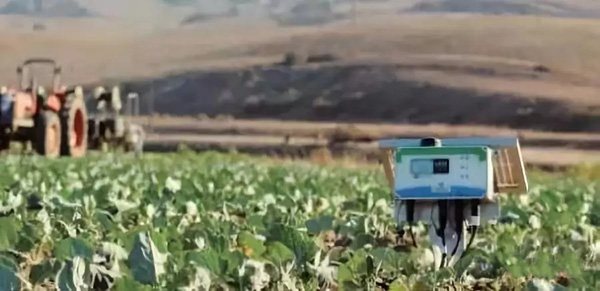When most people think of the Internet, they don’t immediately think of agriculture. Instead, most people think of computers or smartphones. People don’t even know yet, but Internet of Things (IoT) technology allows farmers to connect devices to the internet to improve farming operations. IoT technology enables farmers to use the Internet to reduce waste, better control pests and diseases, simplify livestock management and increase production efficiency.


reduce waste
With limited resources available to grow crops or raise livestock, farmers are always looking for ways to reduce waste. Resource protection, especially water resources, is very important, especially in drought-stricken areas. While traditional conservation methods, such as only irrigating after dusk, can reduce waste, Internet of Things (IoT) technology can further reduce waste and even conserve resources. For example, sensors embedded in the soil can measure moisture and pH, and these sensors are connected to smart irrigation and smart fertilizer systems, which can then apply the right amount of fertilizer and water to ensure optimal conditions for crop growth.
Better pest control
As the public demands more natural foods and less pesticide use, farmers are increasingly looking to reduce or even eliminate pesticide use. Sensors and cameras connected to the web will allow farmers to better monitor pest populations, and if they reach levels that are harmful to crop yields, farmers can remotely release pheromones to control pest populations without having to use synthetic pesticides.
Increase productivity
To maximize yields and profits, farmers must increase production efficiency. Internet of Things (IoT) technology enables farmers to increase productivity in a variety of ways, such as monitoring farm equipment. IoT technology will enable farmers to monitor equipment from tractors to grain conveyors. For example, sensors could be integrated into tractors to determine whether the tractor is operating at maximum efficiency. If the tractor is not operating at peak efficiency, the sensors can send an alert to the farmer so necessary repairs or adjustments can be made immediately. This will help prevent sudden breakdowns of the tractor, allowing it to be used in the field longer, increasing productivity. Likewise, network-connected sensors can be integrated into grain conveyors that can monitor various parameters, such as the friction generated by the belt. If the grain conveyor creates too much friction, a sensor triggers an alarm, alerting the operator to add more lubricant. Likewise, taking a proactive approach to maintenance can make equipment last longer, increasing productivity.
livestock management
The cost of raising livestock increases every year. At the same time, the public is pushing for more humane ways of raising and handling livestock, because raising livestock humanely results in higher-quality, more nutritious meat. Under pressure to reduce costs and raise livestock in a more humane way, farmers are turning to IoT technology, which allows farmers to embed sensors in their animals without causing them discomfort, for example. Using the information collected by these sensors, farmers are able to monitor the overall health of their livestock by analyzing blood pressure, heart rate and other parameters. If any of these parameters fall outside the acceptable range, farmers will be able to provide treatment to livestock more quickly. Not only can these sensors help monitor the health of livestock, but in some cases, they can also help track the location of livestock (especially useful for wild grazing).
Zusammenfassend
The benefits of IoT technology in agricultural operations include, but are not limited to, reducing waste, improving pests and diseases and increasing production efficiency and livestock management. As farmers continue to face increasing costs and limited resources, IoT technology will be key to reducing costs and maximizing available resources.